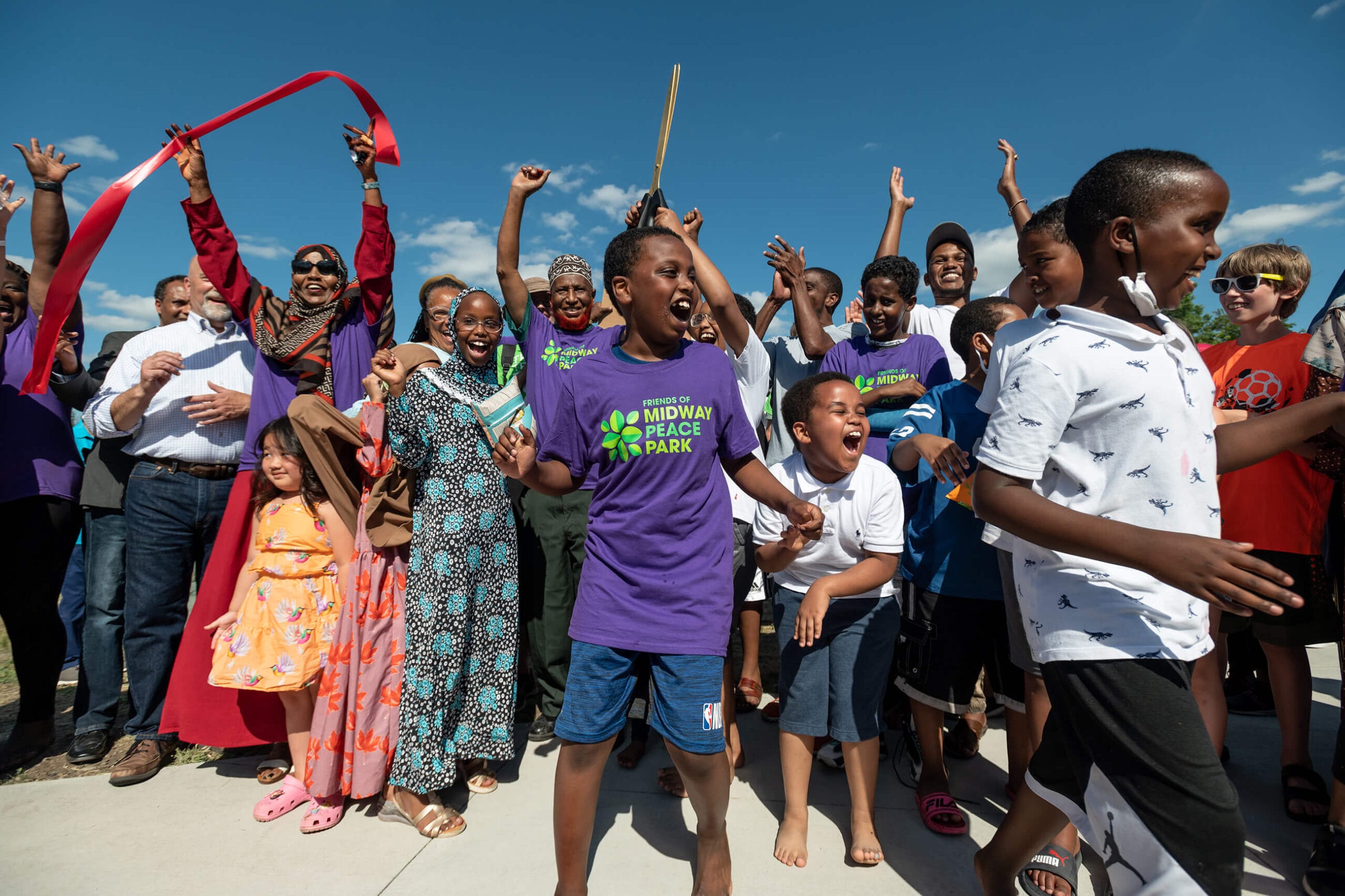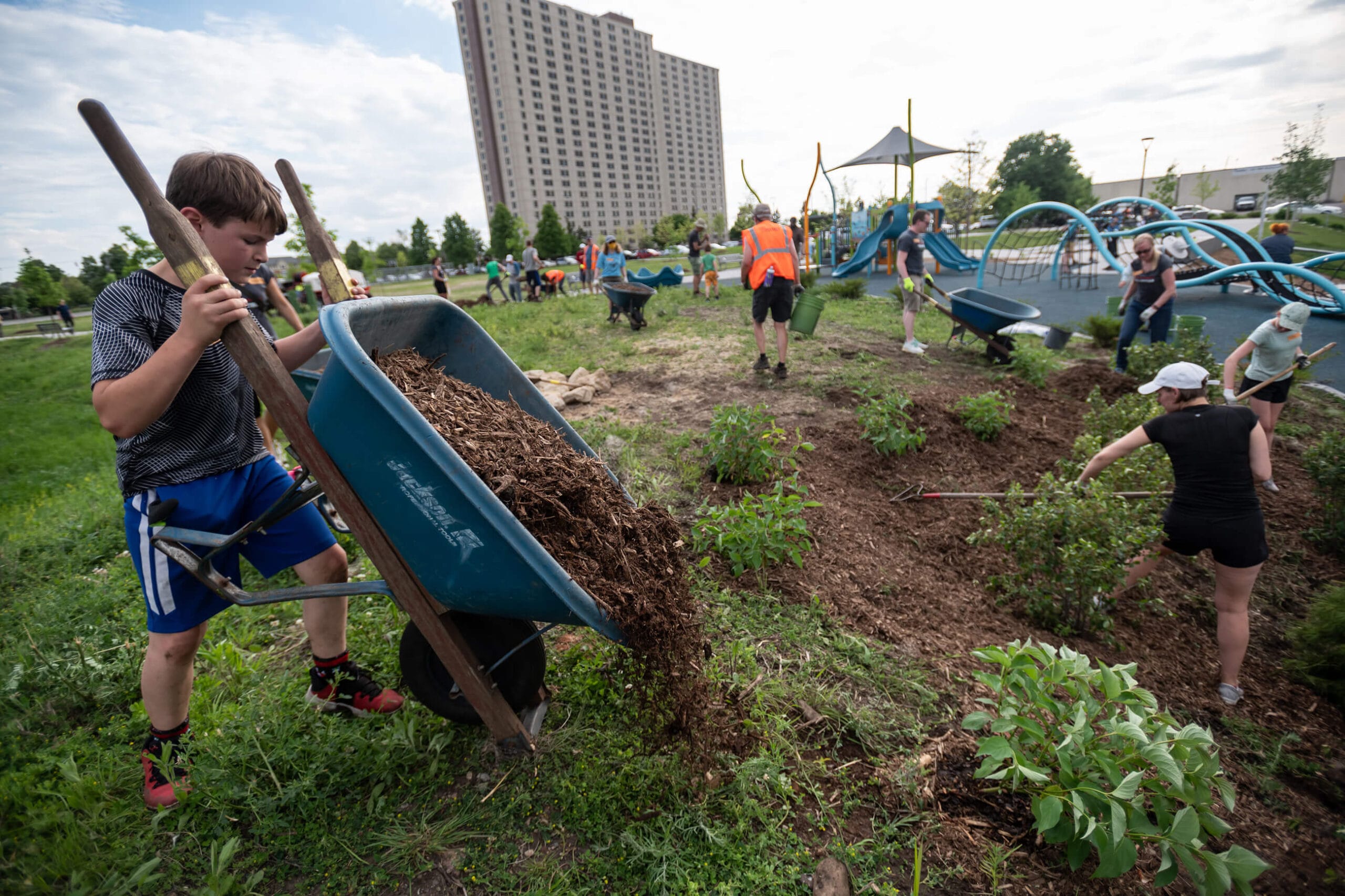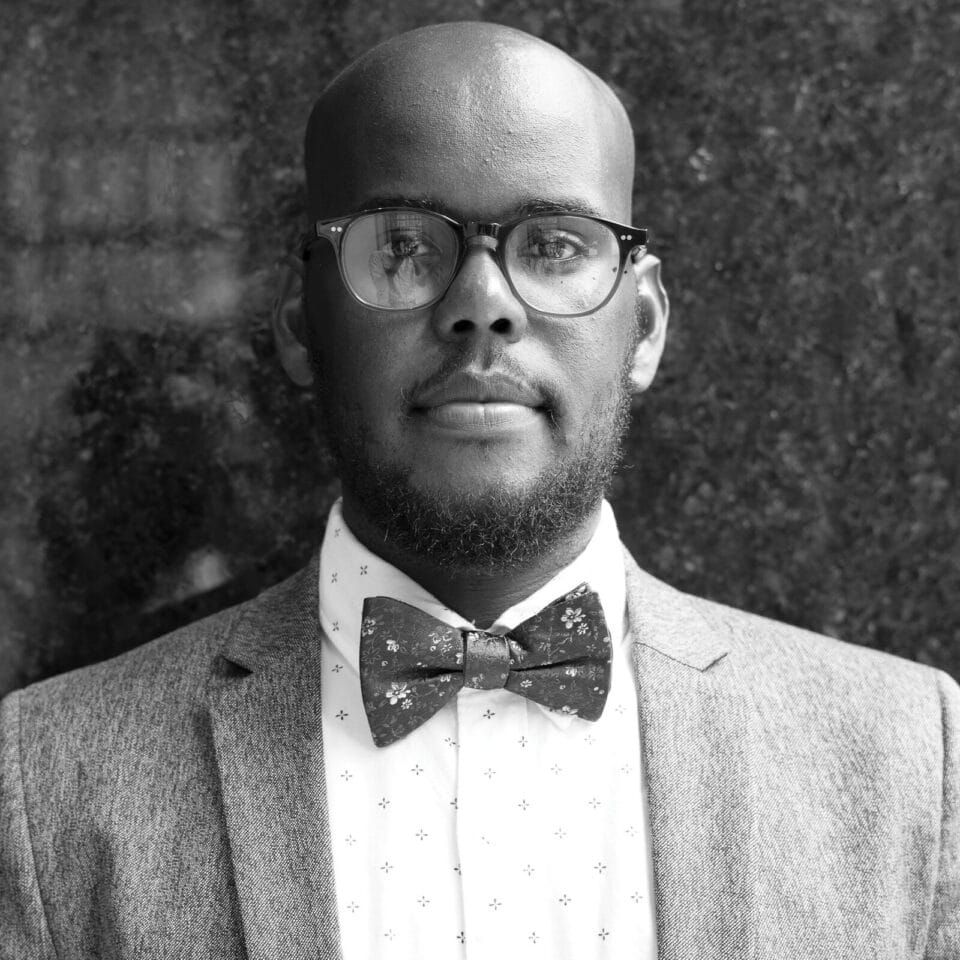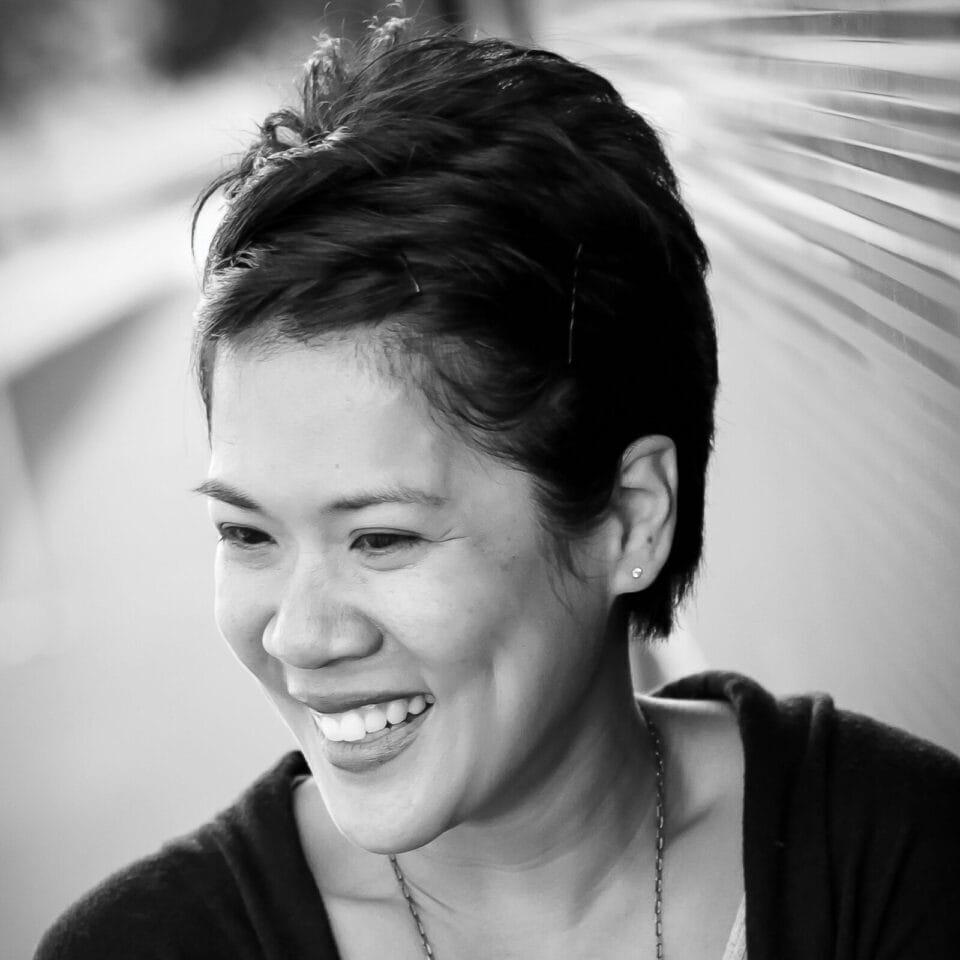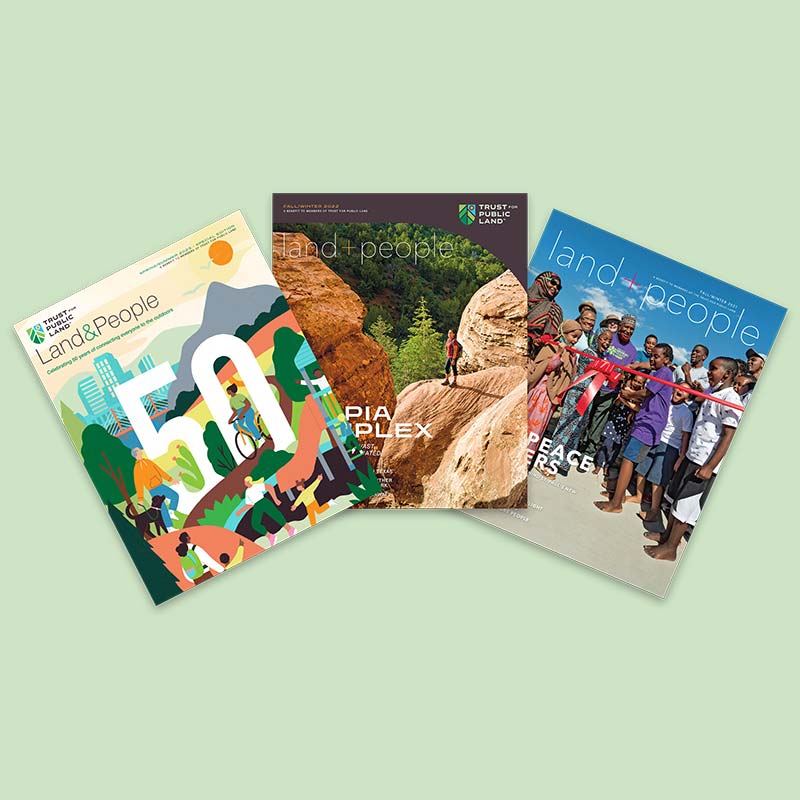If there’s one thing that 13-year-old Yakub Yussuf does on a daily basis, it’s hang out with his siblings and friends at the newest park in St. Paul, Minnesota. The teens get to do anything they’re in the mood for at Midway Peace Park—things like playing basketball, riding bikes, or just roaming around.
The best part about the daily ritual for Yakub? He doesn’t have to travel long distances or cross busy roads to reach the park. The 5-acre facility sits right at the foot of Skyline Tower in the Midway neighborhood, where he’s shared an apartment with his family since emigrating from Kenya in 2018.
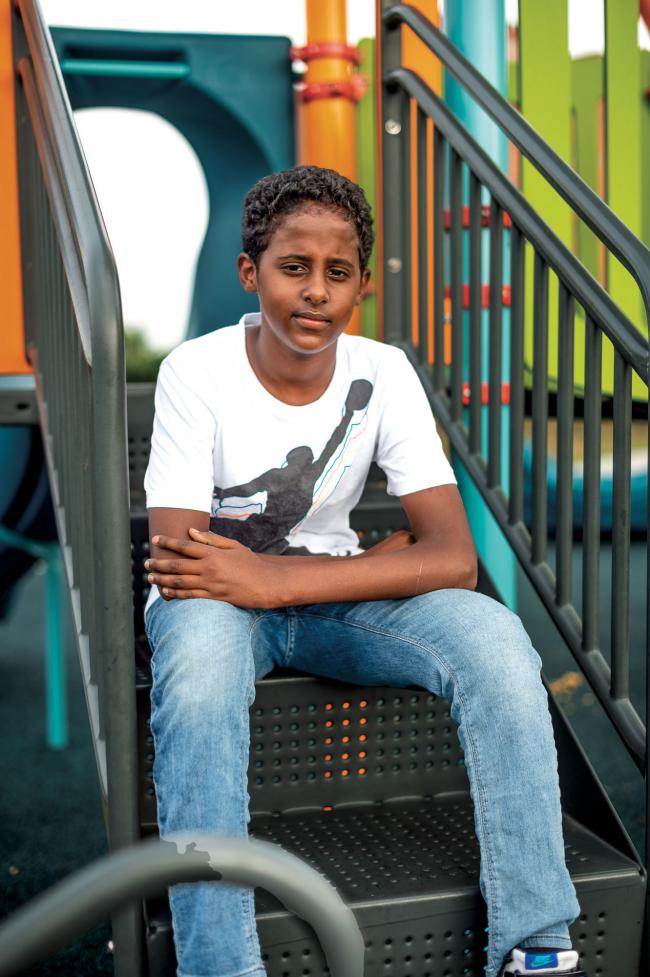
But before Midway Peace Park opened to the public in November 2020, access to nearby green space had been out of reach for Yakub and other predominantly East African residents—most of whom are immigrants and refugees from Somalia and Ethiopia—of the low-income high-rise.
On a recent summer afternoon, Yakub told me about the challenges he and his peers faced before Midway Peace Park came into being. His go-to outdoor space at the time was Skyline’s on-site playground, which has two sets of spiral slides, a few swings, and metal benches—a perfect spot for little kids. But for older ones, the playground lacked the things they needed most: a basketball court, an open field for soccer or football, or enough space to run around.
As an alternative, some of the young teens turned to the narrow hallways of Skyline. Here, they played soccer and rode their bikes. Sometimes, the youngsters would accidentally smash the balls or bikes on the walls. “They used to crack open walls, and then just leave it there,” Yakub said. “People used to get angry at the kids.”
The dearth of open space in the area wasn’t only a problem for teenagers in Skyline. Adults, too, often opted to stay in their apartments since they couldn’t easily walk to a nearby green space. This is partly because Skyline Tower is sandwiched between the Interstate 94 freeway and the Green Line light rail, cutting off area residents from accessing parks and green spaces.
Even as the Skyline community struggled to access green space, St. Paul and Minneapolis park systems have consistently ranked among the best in the nation. Trust for Public Land’s 2021 ParkScore® index placed the St. Paul park system second, behind Washington, DC, and Minneapolis third. One criterion on which the annual report bases its rankings is whether parks have such amenities as playground equipment, basketball hoops, splashpads, and recreation centers. The ParkScore index also rates cities on their per capita park spending, their park acreage and median sizes, the number of residents living within a 10-minute walk of a park, and, starting in 2021, new measures of equity.
Since Trust for Public Land began to publish its annual report, the Twin Cities have scored pretty high in most of the categories. According to the 2021 ParkScore rankings, 99 percent of St. Paul residents and 98 percent of Minneapolis dwellers live within a 10-minute walk of a park.
But those rosy numbers obscure the fact that—here in the Twin Cities and in communities across the country—many people of color live in neighborhoods that lack access to adequate green space. Indeed, residents of neighborhoods in St. Paul with a majority of people of color have access to 30 percent less park space than residents of majority-white neighborhoods. In Minneapolis, that number is 58 percent.
That leaves tens of thousands of people, and especially people of color, shut out of the proven health benefits that parks provide. As Kathleen L. Wolf, a University of Washington professor and nature expert, notes, parks and open spaces can improve one’s physical and mental health. “Nearly 40 years of research evidence confirms that nearby nature, including parks, gardens, the urban forest and green spaces, support[s] human health and wellness,” Wolf writes. “The research about active living and opportunities to avoid chronic diseases . . . is particularly relevant to large parks where people can enjoy walking and bike paths, and playing fields.”
Read more on the power of parks to support health in TPL’s 2023 ParkScore report.
Mindful of these benefits, high school students, neighbors, and advocates in St. Paul embarked on a journey to bring a park to Midway a decade ago. To realize their ambitious vision, these advocates got in touch with Trust for Public Land. The result was Midway Peace Park.

